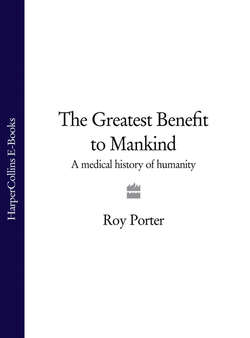Читать книгу The Greatest Benefit to Mankind: A Medical History of Humanity - Roy Porter - Страница 46
EARLY INDIA
ОглавлениеAs in many other parts of the world, the first settled agricultural communities in India appeared at the end of the last Ice Age about ten thousand years ago; around 3000 BC, as archaeology reveals, developments took place around the Indus river leading to elaborate civilization. Excavations of the imposing Indus cities of Harappa, Mohenjo-daro and Lothal have revealed what must have been a complex urban social order, with well-defined social and occupational hierarchies. As well as priests, healers must have existed: perhaps the function was twinned. Remains of great public water tanks in these cities suggest communal bathing and hence cleansing rites, perhaps linking ritual to hygiene.
Around 1500 BC, this Indus civilization seems to have fallen into decay; the explanation for this may lie in climatic and environmental changes affecting the water courses. Meanwhile, the Indo-European peoples were migrating into south Asia, and their civilization achieved a position of dominance in the subcontinent. Brotherhoods of hereditary priests (brahmana) grew powerful, becoming the masters and guardians of Sanskrit religious teachings called veda (the knowledge). Though there is no distinctive ‘Vedic medicine’, such religious writings shed some indirect light on contemporary beliefs about health and healing.
It seems that a magico-religious outlook on illnesses and treatments became established which broadly parallels Mesopotamian or Egyptian practices. Distinctive healing powers were associated with particular deities, it being believed that diseases could be produced by wicked spirits or by happenstance. The deities who brought disease visitations were to be propitiated by rites involving mantra (incantations), supplications and expiation. Herbs were valued for their therapeutic powers, while injuries and broken bones were attributed to everyday causes; but some diseases – conditions like yaksma (perhaps consumption) and takman (fevers associated with the monsoon season) – were judged to be signs of demonic and magical interventions. Beliefs about the body and its workings came from various sources. Vedic rites involved the use of animal and human sacrifice, and the ceremonial texts contain some listings of anatomical parts. Some basic forms of surgery were also recorded, cauterization being employed to stanch wounds, and reeds were used as catheters to relieve the retention of urine. Vedic writings speak of the value of water, whether to be bathed in, drunk or ritually applied.
From perhaps 1000 BC, Veda constituted the main faith of north India. Other groups also were appearing, seemingly dedicated to making religion a more spiritual matter and placing emphasis upon the need to lead a life of moral uprightness. Alongside many individual ascetics, the chief and best known of such groups was the Buddhist community, founded by Gautama Sakyamuni (the Buddha, 563–483 BC). Others included those subsequently called the Jains. These gatherings gave rise to new medical practices.
The monastic rule which governed the lives of Buddhist monks, dedicated to acquiring the ‘peace of mind brought about by the abandonment of desire’, declared that among their meagre belongings should be included five elementary medicines: fresh butter, clarified butter (ghee), oil, honey and molasses. This list expanded in time to embrace a large pharmacopoeia and divers foodstuffs. Archaeological evidence from the fourth century AD shows that some Buddhist monasteries included a sick-room, which may have developed into a more distinct hospital, at around the same time as the emergence of hospitals in the Christian West. Initially, the monks’ healing activities were for fellow brethren, but, as in the West, the monasteries also served the lay community.
In contrast to the earlier Vedic medicine, which is not at all similar to Ayurveda, there are striking resemblances between these Buddhist texts and later Ayurvedic texts on medicinal herbs and on specific treatments. In terms of origins and influences, the Ayurvedic texts are themselves misleading, since they claim a derivation from the Vedic tradition. The reality is that, while the situation is complex and controversial, they probably developed out of the newer ascetic milieu. Best scholarly opinion today holds that the ascetic communities of the fourth century BC onwards, particularly the Buddhist community, played a vital part in the evolution of Ayurveda.
